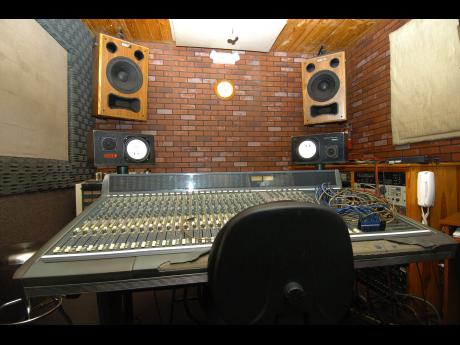Music and More | When the studios move ‘uptown’ themes change
Two days ago, I had the distinct pleasure of receiving a guided tour into the childhood memories of singer Errol Dunkley (OK Fred, Black Cinderella), who showed The Gleaner's team some of the places he lived as a child. The first was at 32 Pink Lane in Denham Town, very close to where his name, along with Stranger Cole's, is on a star drawn on a sidewalk. Before we went there, he stopped by Horace Andy's Bond Street Studio, famed as Duke Reid's Treasure Isle base.
Dunkley also took us to Woodrow Street in Trench Town, and, although we did not go in, we passed the Triple X Studio in 'Jungle'. Our last stop was at Sound Waves' base near Cross Roads, St Andrew, where the sound system's boxes were set up and there was a lot of activity in the yard. We did not go into the studio, Dunkley singing part of a new song, Cool Runnings, outside.
These places are not far apart, but there was a distinct difference in atmosphere between the urban congestion of Denham and Jones towns and the commercial area of Cross Roads where Sound Wave has established itself. So I got to thinking about the many other studios I have been to across Kingston and St Andrew - from Anchor on Windsor Avenue to Big Ship in Havendale, Kilamanjaro's dubplate set-up on Whitehall Avenue to Sly & Robbie's 'One Pop' on Red Hills Road and Tuff Gong off Marcus Garvey Drive - and how the physical location of where music is made affects the content.
If would be utterly simplistic, and by extension, erroneous, to say that when the studios were mostly on the grittier side of town, the music made there reflected that. It would mean that only songs of social hardship could have come out of King Jammy's in Waterhouse, and Big Yard could not have been the place where a song speaking about life's hardships was made. However, there is no escaping how surroundings can affect artistic direction and content. So a lyricist may see something just before - even on a break outside during - the creative process that has an immediate impact on what they put into their music. It is more likely, though, that their long-term socialisation and exposure determine what goes into a song, no matter where it is made.
But location still has a role to play. For while a substantial studio set-up in a run-down area indicates that the person who owns the facility is relatively wealthier than the community's general population, they may be 'small fries' outside that community, and hence, may be more able to relate to the theme of social imbalance. This may make them more receptive to artistes who present that sort of material. The converse is true - persons from more well-fed backgrounds with expansive studios in more well-to-do areas may find it easier to connect with music of happy times.
As we look at how Jamaica's popular music has developed and is unfolding thematically, this is an area - how space affects creativity - that we need to take into consideration.

